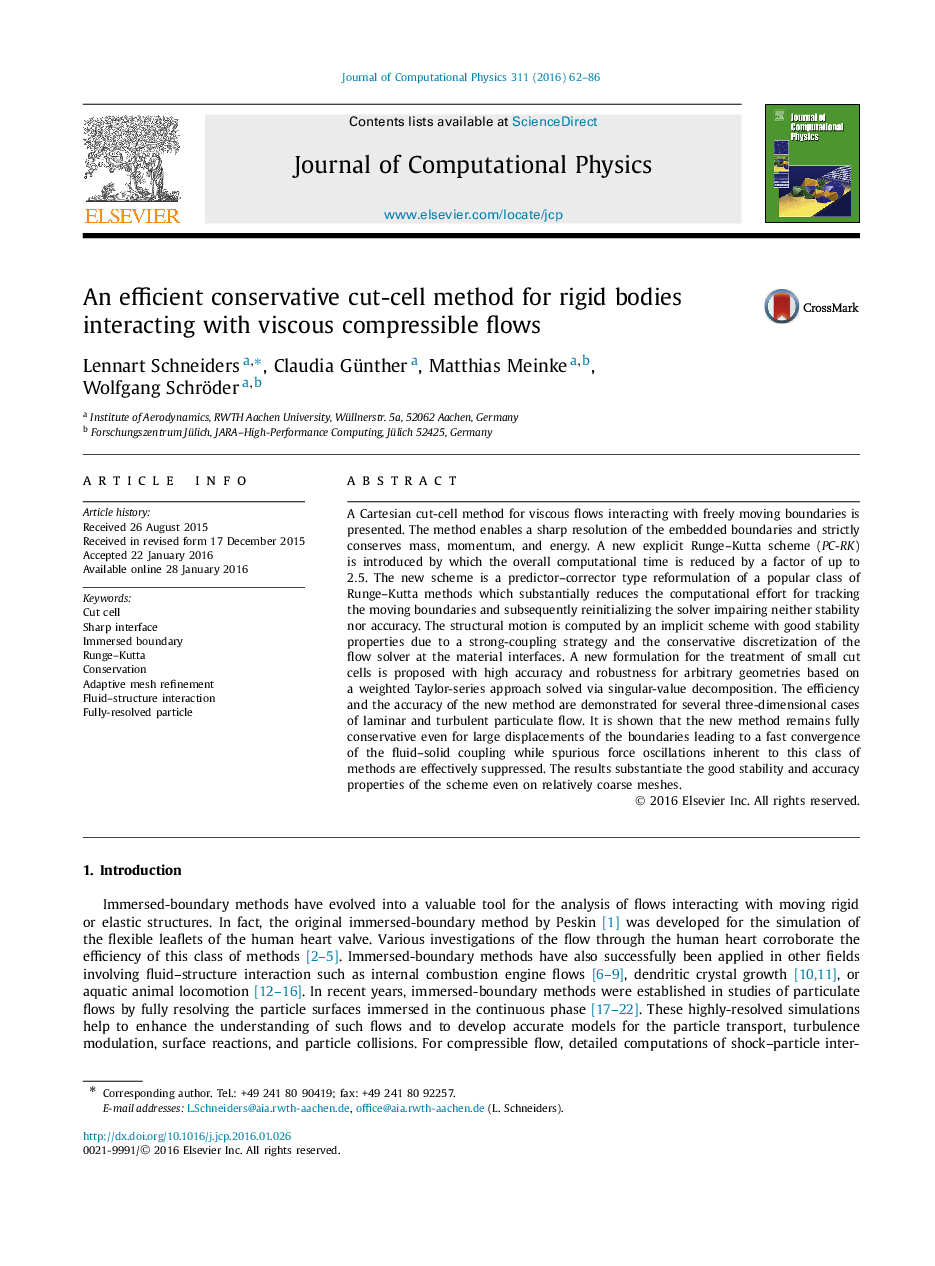| Article ID | Journal | Published Year | Pages | File Type |
|---|---|---|---|---|
| 6930406 | Journal of Computational Physics | 2016 | 25 Pages |
Abstract
A Cartesian cut-cell method for viscous flows interacting with freely moving boundaries is presented. The method enables a sharp resolution of the embedded boundaries and strictly conserves mass, momentum, and energy. A new explicit Runge-Kutta scheme (PC-RK) is introduced by which the overall computational time is reduced by a factor of up to 2.5. The new scheme is a predictor-corrector type reformulation of a popular class of Runge-Kutta methods which substantially reduces the computational effort for tracking the moving boundaries and subsequently reinitializing the solver impairing neither stability nor accuracy. The structural motion is computed by an implicit scheme with good stability properties due to a strong-coupling strategy and the conservative discretization of the flow solver at the material interfaces. A new formulation for the treatment of small cut cells is proposed with high accuracy and robustness for arbitrary geometries based on a weighted Taylor-series approach solved via singular-value decomposition. The efficiency and the accuracy of the new method are demonstrated for several three-dimensional cases of laminar and turbulent particulate flow. It is shown that the new method remains fully conservative even for large displacements of the boundaries leading to a fast convergence of the fluid-solid coupling while spurious force oscillations inherent to this class of methods are effectively suppressed. The results substantiate the good stability and accuracy properties of the scheme even on relatively coarse meshes.
Keywords
Related Topics
Physical Sciences and Engineering
Computer Science
Computer Science Applications
Authors
Lennart Schneiders, Claudia Günther, Matthias Meinke, Wolfgang Schröder,
